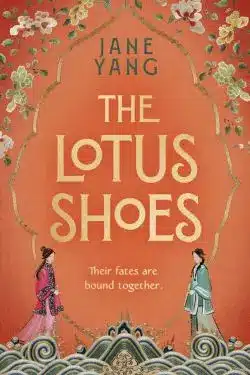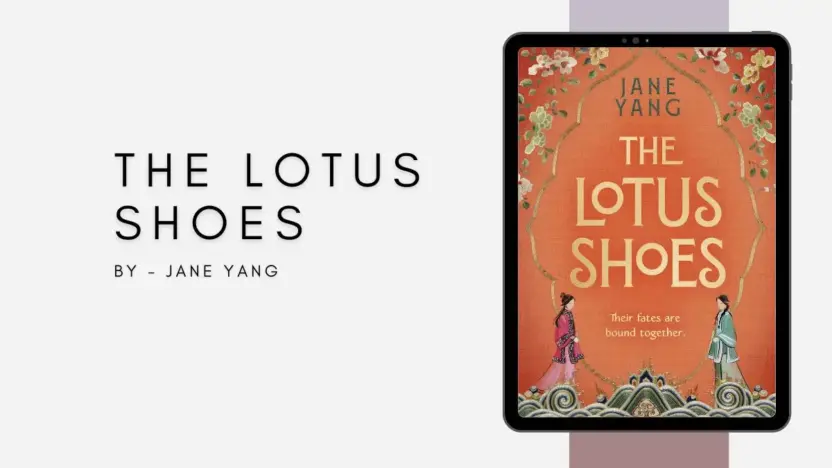Jane Yang’s debut novel, The Lotus Shoes, transports readers to 19th-century China, offering a poignant exploration of friendship, societal norms, and personal resilience. Drawing inspiration from her own family’s history and cultural narratives, Yang crafts a story that delves deep into the lives of two young women bound by fate and tradition.
Plot Overview
Set against the backdrop of 1800s China, the novel centers on Little Flower, a young girl sold into servitude as a muizai (maidservant) to the affluent Fong family. Despite her lowly status, Little Flower possesses tightly bound feet, known as “golden lilies,” a symbol of honor and desirability in Chinese society. Her exceptional embroidery skills further set her apart, making her a target of envy and resentment.
Linjing, the Fong family’s daughter, feels overshadowed by Little Flower’s talents and the attention she garners. This jealousy leads Linjing to sabotage Little Flower’s efforts, including the destruction of a meticulously crafted wedding quilt that took two years to complete. Their tumultuous relationship takes an unexpected turn when a scandal forces both women into the Celibate Sisterhood, a convent-like institution. Here, Little Flower’s artistry catches the eye of a nobleman, jeopardizing her safety in an environment where disobedience is met with severe punishment. The narrative unfolds as both women navigate their intertwined destinies, confronting themes of betrayal, loyalty, and the pursuit of personal freedom.

Historical and Cultural Context
The practice of foot-binding, central to the novel’s narrative, was a deeply ingrained tradition in China, symbolizing beauty and social status. Yang’s portrayal of this custom offers readers a window into the physical and emotional toll it exacted on women. Through Little Flower’s experiences, the novel sheds light on the societal pressures and familial expectations that perpetuated this practice.
Moreover, the art of embroidery serves as a powerful motif throughout the story. In traditional Chinese culture, embroidery was more than mere decoration; it was a medium through which women expressed their creativity, aspirations, and even dissent. Little Flower’s embroidery becomes a symbol of her inner strength and desire for autonomy, contrasting sharply with the constraints imposed upon her by society.
Character Development
Yang’s characterizations are both nuanced and compelling. Little Flower emerges as a beacon of resilience, her bound feet and servitude notwithstanding. Her journey from a subservient maid to a woman who dares to envision a life beyond societal constraints is both inspiring and heart-wrenching.
Linjing, on the other hand, embodies the complexities of privilege and insecurity. Raised in luxury yet plagued by feelings of inadequacy, her actions towards Little Flower oscillate between cruelty and moments of vulnerability. Their evolving relationship serves as the novel’s emotional core, highlighting the intricate dynamics of female friendship amidst societal hierarchies.
Thematic Exploration
At its heart, The Lotus Shoes is a meditation on the themes of freedom and confinement. The physical binding of feet serves as a metaphor for the broader societal bindings that restrict women’s choices and movements. Through the protagonists’ struggles, Yang critiques the patriarchal structures that dictate women’s roles and behaviors.
Additionally, the novel delves into the concept of art as a form of resistance. Little Flower’s embroidery is not just a skill but a lifeline, a means through which she asserts her identity and challenges the limitations imposed upon her. This artistic expression becomes a conduit for hope, defiance, and ultimately, transformation.
Reception and Critical Acclaim
Since its release, The Lotus Shoes has garnered widespread acclaim for its rich storytelling and historical authenticity. Publishers Weekly lauds the novel for its “expert plotting and nuanced historical details,” noting that it “enchants from the first page to the last.” Readers have also praised Yang’s ability to bring 19th-century China to life, with one reviewer noting, “The historical details had me googling everything from foot binding to the class system in China.” Such feedback underscores the novel’s capacity to educate and engage, prompting readers to delve deeper into the cultural practices and historical contexts presented.
Author’s Background and Inspiration
Jane Yang’s personal history significantly informs the narrative of The Lotus Shoes. Born in the Chinese enclave of Saigon and raised in Australia, Yang grew up immersed in stories from Old China, passed down through generations. Her family’s migration and the challenges they faced imbued her with a profound understanding of displacement, resilience, and the complexities of cultural identity.
In an interview, Yang shared that her grandmothers were pivotal in shaping her understanding of traditions like foot-binding. These familial narratives provided a foundation upon which she built the rich tapestry of The Lotus Shoes, blending historical facts with intimate storytelling.
Conclusion
Jane Yang’s masterful storytelling not only illuminates a specific historical period but also resonates with universal themes of freedom, artistry, and the transformative power of friendship. This debut novel is a compelling read for anyone interested in historical fiction that delves deep into the human spirit’s capacity for resilience and reinvention.
Also Read: The Business Trip: By Jessie Garcia (Book Review)



